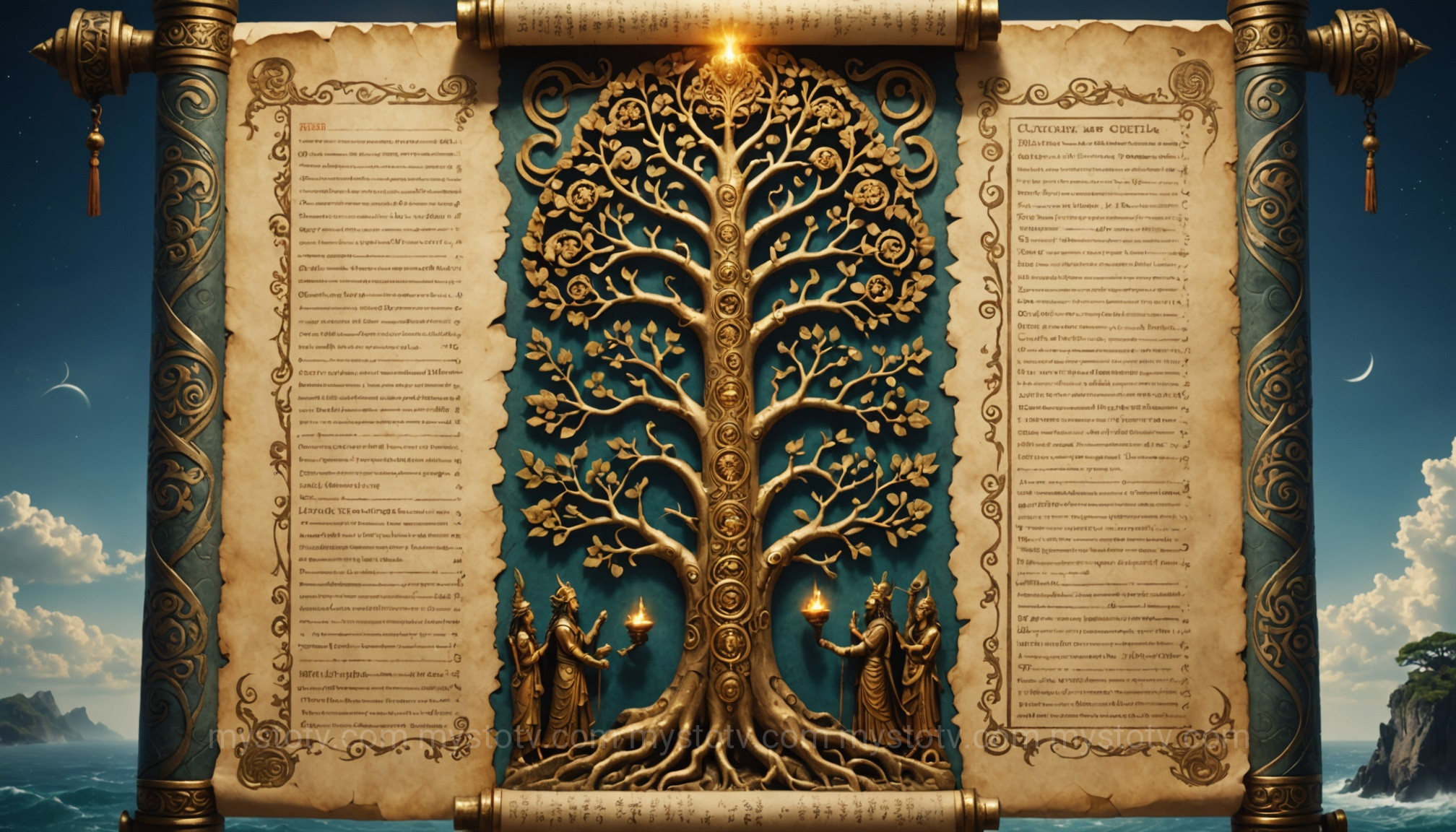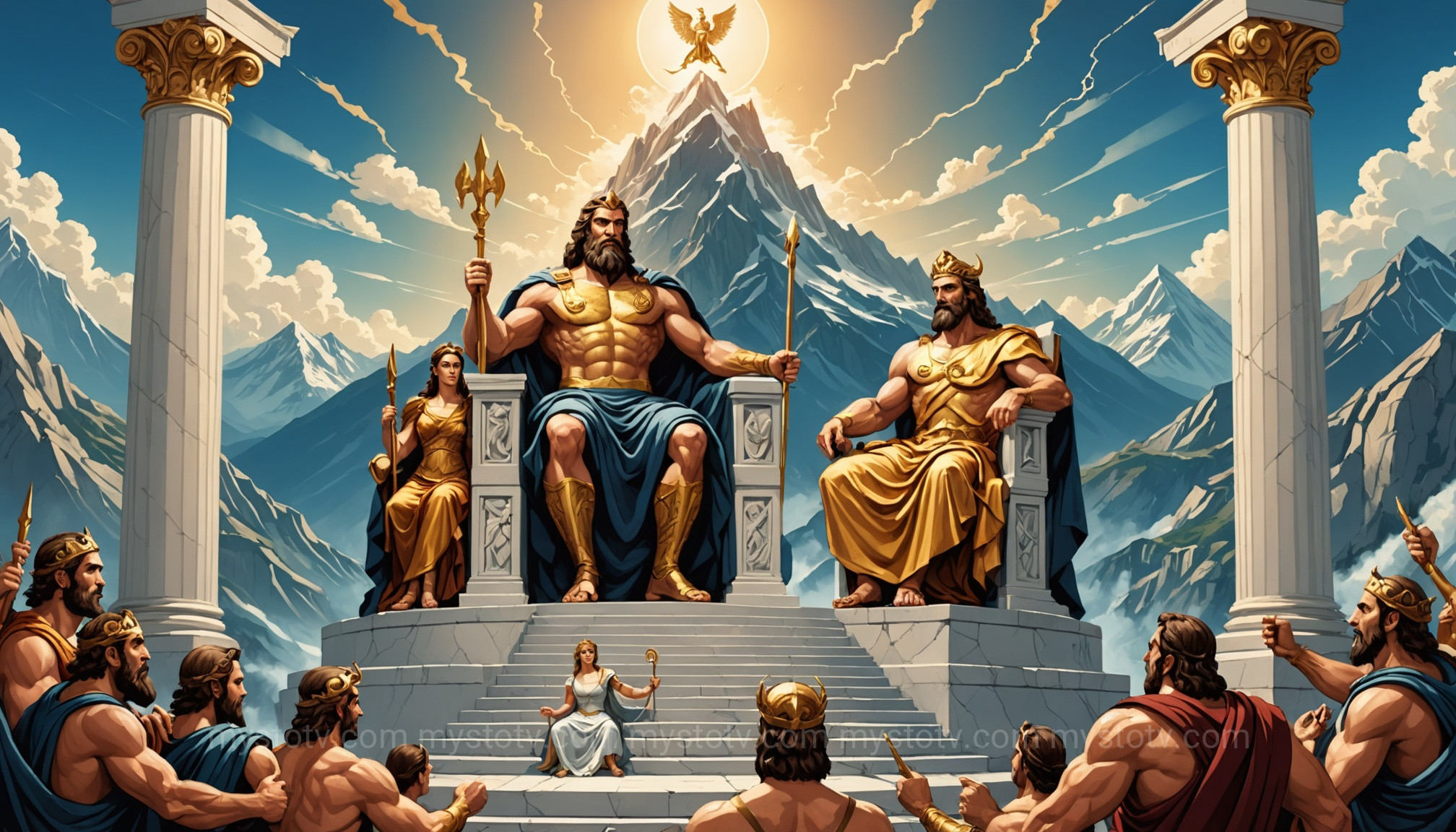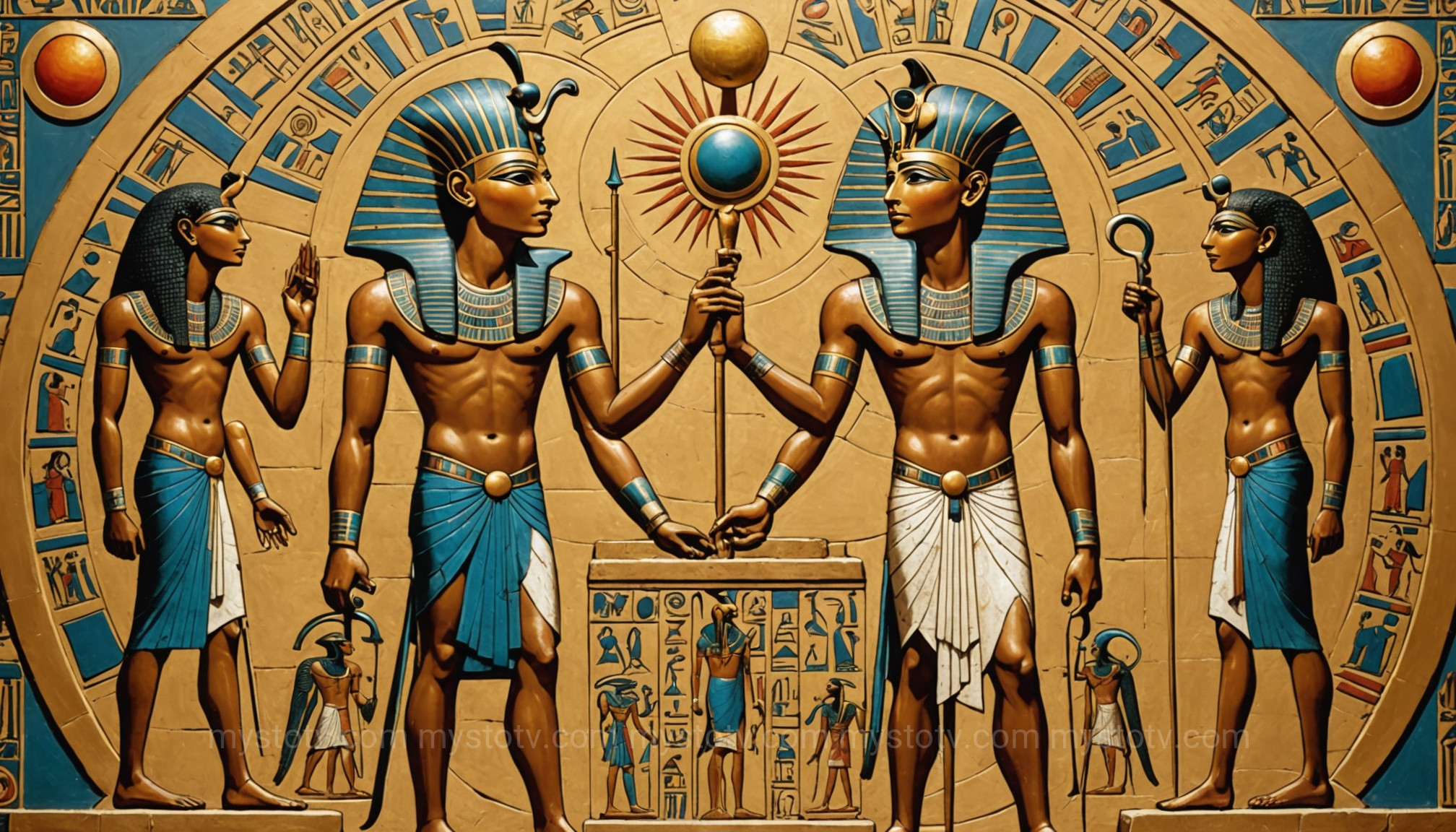Contents
Understanding the Core Pantheon Hierarchy Definition
To truly grasp how gods are ranked, we must first dissect the fundamental principles behind the pantheon hierarchy definition. It’s a concept that combines the collective nature of a pantheon with the organizational principles of a hierarchy, creating a framework that is both theological and sociological in nature. This framework helps explain the relationships, conflicts, and functions of deities within a given mythological system.
What is a Pantheon?
At its simplest, a pantheon is the complete group of gods and goddesses recognized by a particular society or religion. The term originates from the Greek pan ("all") and theos ("god"). A pantheon is more than just a list of deities; it represents a closed system where each member has a distinct personality, role, and set of relationships. They interact, form alliances, and engage in conflicts, much like a divine family or court.
The 'Hierarchy' in the Pantheon Hierarchy Definition
The "hierarchy" component is where the ranking occurs. It introduces a vertical structure of authority and power. In this divine pecking order, not all gods are created equal. A hierarchy delineates who holds supreme authority, who serves as a major power, and who occupies the roles of lesser deities, demigods, or nature spirits. This ranking is rarely arbitrary; it's determined by specific, culturally significant criteria. Understanding this aspect is central to any complete pantheon hierarchy definition, as it moves beyond a simple list of names to a dynamic system of influence and control.
Why Do Pantheons Have Hierarchies?
The existence of divine hierarchies speaks volumes about the human mind. Humans naturally seek order and structure to make sense of a chaotic world. By projecting their own social structures—such as monarchies, family clans, or military command chains—onto the divine realm, they created a cosmos that was understandable and relatable. A supreme king-god like Zeus or Odin mirrored the human kings who ruled on Earth. This divine order also served a practical purpose: it clarified which god to pray to for specific needs. If you needed victory in battle, you appealed to a powerful war god, not a minor hearth spirit. This functional aspect is a critical element of the pantheon hierarchy definition, as it shows the system was an integral part of religious practice.
Common Criteria in the Pantheon Hierarchy Definition Across Cultures

While every culture developed a unique pantheon, the methods used to rank their deities share remarkable similarities. The logic behind the pantheon hierarchy definition often relies on a few universal principles of power, origin, and relevance. Analyzing these criteria allows us to compare different mythological structures and understand the core values they represent.
Power and Domain: The Primary Ranking Factor
The most straightforward ranking metric is a deity's raw power and the scope of their domain. A god who controls a fundamental force of nature, like the sky, the sun, or the entire ocean, will almost invariably outrank a god who presides over a single river, a specific forest, or a craft like blacksmithing. For example, in the Greek pantheon, Zeus, the god of the sky and thunder, holds supreme power over Poseidon (seas) and Hades (underworld), who are themselves immensely powerful. All three, however, far outrank a nymph or a muse whose influence is localized and specific. A deity's domain is their sphere of influence, and the larger and more critical that domain is to the cosmos, the higher their position in the hierarchy.
Genealogy and Creation: The Role of Divine Lineage
Origin stories are paramount in establishing divine status. A god's position is often determined by their relationship to the primordial or creator deities. Those who were part of the first generation of gods or who are the direct children of the ruling deity typically hold the highest ranks. This is a divine aristocracy. In Greek mythology, the Olympians cemented their power by overthrowing their parents, the Titans. Zeus's status as king is reinforced by his role as the son of the Titan Cronus and the father to a new generation of powerful gods like Apollo, Artemis, and Athena. A deity’s place in the family tree is a crucial component of the pantheon hierarchy definition, establishing a clear line of succession and inherited authority.
Function and Importance to Humanity
A god's rank can also be elevated by their importance to the daily lives and survival of their worshippers. Deities associated with critical human activities—such as agriculture, fertility, war, wisdom, or law—tend to be more prominent than those with more abstract or distant domains. Athena was not just a goddess of wisdom; she was the patron deity of Athens, a major city-state, which elevated her status immensely. Similarly, gods of agriculture like Demeter (Greek) or Freyr (Norse) held significant sway because a good harvest was a matter of life and death. This demonstrates that a pantheon hierarchy is not just a celestial affair but is also shaped by mortal needs and values.
Case Studies: Examining the Pantheon Hierarchy Definition in Practice
Theoretical definitions come to life when we examine their application in specific cultures. By looking at the Greek, Norse, Egyptian, and Hindu systems, we can see the different ways the pantheon hierarchy definition manifests, from rigid monarchies to more fluid and functional structures. These case studies exemplify the common criteria for ranking gods discussed earlier.
The Greek Pantheon Hierarchy Definition: A Family Affair

The Greek system is arguably the most famous example of a divine hierarchy. It is structured like a royal family, complete with power struggles, alliances, and drama. At the absolute top sits Zeus, King of the Gods and Men. His authority is based on both his immense power (domain over the sky) and his victory over the Titans (genealogy and conquest). His siblings, Poseidon and Hades, form the next tier, ruling their own powerful domains but acknowledging Zeus's supremacy. Below them are Zeus's children and other major Olympians, such as Apollo, Artemis, Athena, Ares, and Aphrodite, each with a significant function vital to cosmic and human affairs. Further down the ladder are lesser gods, nymphs, satyrs, and other nature spirits, who possess limited power and localized influence.
The Norse Pantheon Hierarchy Definition: A Tale of Two Tribes
The Norse hierarchy is more complex, defined by tribal affiliation and a focus on martial prowess. It is primarily split between two families of gods: the Aesir and the Vanir. The Aesir, led by Odin, are associated with war, wisdom, and power. Odin, the All-Father, sits at the top, but his rule feels less absolute than Zeus's; it's maintained through knowledge and sacrifice. Other major Aesir include Thor, the god of thunder and strength, and Tyr, the god of law and heroic glory. The Vanir, including Freyr and Freya, are associated with fertility, nature, and prosperity. After an ancient war, the two tribes integrated, but the Aesir generally hold a higher, more dominant position in the hierarchy, reflecting a society that highly valued warrior culture.
The Egyptian Pantheon Hierarchy Definition: A Syncretic and Shifting Order

Unlike the more static Greek model, the Egyptian pantheon was remarkably fluid, with its hierarchy shifting over millennia in response to political changes. The rise and fall of different cities often led to the promotion of their patron deities. For a long period, the sun god Ra was the supreme creator deity. However, when the capital of Egypt moved to Thebes, their local god, Amun, grew in importance. Eventually, the two merged in a process called syncretism to become Amun-Ra, King of the Gods. This demonstrates that a pantheon hierarchy definition can be dynamic, reflecting the political and social realities of the mortal world. The story of Osiris, Isis, and Horus also formed another central power structure focused on death, rebirth, and rightful kingship.
The Hindu Pantheon Hierarchy Definition: The Concept of the Trimurti
The Hindu pantheon offers a fascinating contrast to the monarchical models. While there are thousands of gods (Devas), the core structure is often represented by the Trimurti ("three forms"). This is a triumvirate of three great gods who personify the cosmic functions of creation, preservation, and destruction:
- Brahma, the creator.
- Vishnu, the preserver, who maintains cosmic order and often incarnates on earth as avatars like Rama and Krishna.
- Shiva, the destroyer, whose destruction paves the way for new creation.
This is less of a top-down hierarchy and more of a balanced, cyclical system. While different sects may elevate one god as supreme (e.g., Vaishnavism for Vishnu, Shaivism for Shiva), the concept of the Trimurti represents a sophisticated, functional balance rather than a strict power pyramid. This unique structure provides a different kind of pantheon hierarchy definition, one based on cosmic roles rather than pure authority.
The Human Mirror: What the Pantheon Hierarchy Definition Reveals About Society
Ultimately, the study of the pantheon hierarchy definition is the study of humanity itself. These divine structures are not arbitrary inventions; they are mirrors reflecting the societies that conceived them. The way a culture ranks its gods reveals its deepest-held beliefs, its political organization, and its collective aspirations and fears.
Reflecting Political Structures
The link between divine and mortal governance is undeniable. The Greek pantheon, with its king, royal court, and squabbling family members, is a clear reflection of the political landscape of Mycenaean Greece and its collection of city-states ruled by kings. The highly organized and bureaucratic nature of the Egyptian state is mirrored in its complex and ordered pantheon. By creating gods who rule in a familiar way, people made the cosmos, and their place within it, more comprehensible. This is evident in the dynamic Egyptian hierarchy which changed with earthly power shifts.
Codifying Values and Fears
A pantheon's hierarchy also serves as a moral and ethical blueprint. The gods who sit at the top embody the virtues a culture prizes most. For the warlike Vikings, it makes sense that Odin (wisdom, war) and Thor (strength, protection) were chief gods. For the Greeks, who prized civilization and intellect, Zeus (order, justice) and Athena (wisdom, strategy) held preeminent positions. The ranking of gods effectively tells a society what is most important—be it martial prowess, intellectual achievement, agricultural fertility, or cosmic balance. Conversely, the forces personified by chaotic or destructive deities (like the Titans or the Jotnar) represent what a culture fears and seeks to control.
In conclusion, the pantheon hierarchy definition is far more than a simple organizational chart for mythical beings. It is a powerful analytical tool that provides a window into the soul of a culture. These divine rankings, established through criteria of power, lineage, and function, are intricate systems that reflect and reinforce human social structures, values, and worldviews. From the rigid monarchy of Olympus to the functional balance of the Hindu Trimurti, each hierarchy tells a unique story about its creators. They show us that in our quest to understand the heavens, we have always ended up telling the story of ourselves.